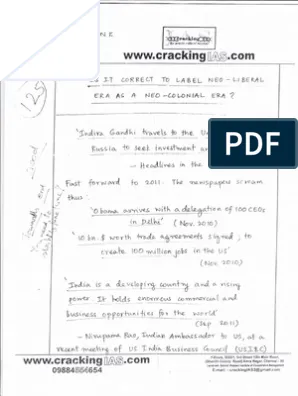- Home
- Prelims
- Mains
- Current Affairs
- Study Materials
- Test Series
 Latest News
Latest News
From Haze to Clarity: Lessons Delhi Can Learn from Beijing
With air quality in Delhi and North India reaching hazardous levels each winter, authorities are exploring artificial rain as a short-term fix. Experts, however, warn that cloud seeding is scientifically unreliable, environmentally risky, and ethically questionable, offering only temporary relief without addressing the root causes of pollution.
Delhi’s Air Pollution Crisis and AQI Monitoring Challenges
- Capping and Discrepancies in AQI Reporting:
India caps AQI at 500, but actual PM₂.₅ levels often exceed this. Private sensors show higher values than official reports, creating false impressions of improvement. Lack of real-time calibration and limited public access to raw data undermine scientific credibility. - Manipulation via Cleaning Operations:
Deployment of continuous water sprinklers and tankers near monitoring stations artificially lowers dust and PM levels, temporarily improving AQI readings. - Relocation of Monitoring Stations:
Moving stations from high-pollution zones to parks or residential areas lowers recorded pollution, compromising data representativeness and integrity. - Dysfunctional Stations During Peak Pollution:
Over 75% of AQI stations were non-functional during Diwali 2025, limiting the ability to activate pollution control measures like the Graded Response Action Plan (GRAP). The Supreme Court has demanded explanations from CAQM and CPCB. - Erosion of Public Trust:
Mismatch between official AQI and public experience (visibility, irritation) decreases trust in institutions.
Public Health and Social Impact
- Delhi’s residents face PM₂.₅ exposure 15–20 times above WHO safe limits.
- Underreported AQI causes risky public behavior—outdoor activities without protection.
- Vulnerable groups like children, elderly, and informal workers bear the highest exposure.
- Air pollution costs India over 1.4% of GDP in healthcare, productivity loss, and mortality.
- Lower-income communities near industrial areas often lack accurate monitoring.
Beijing’s Pollution Control Journey (1998–2013)
- Denial Phase:
Like Delhi, Beijing initially had unreliable data and denial. In 2007, Beijing’s PM₂.₅ levels were six times WHO limits. China initially used misleading “Blue Sky Days” metrics. - Trigger for Change:
The U.S. Embassy’s independent PM₂.₅ data (via Twitter) exposed discrepancies, forcing Beijing to acknowledge the crisis ahead of the 2008 Olympics. - Core Strategies:
- Vehicular controls: odd-even rationing, carpooling, and registration lotteries to limit private vehicles.
- Industrial relocation outside city limits and shift from coal to cleaner fuels.
- Implementation of strict Euro-V vehicle emission standards.
- Regional coordination through Beijing–Tianjin–Hebei environmental plans.
- Public awareness campaigns and community monitoring.
- Results:
From 2013 to 2017, PM₂.₅ levels dropped by ~35%. Transparency and local accountability improved, though pollution remains above WHO norms.
Lessons for Delhi and Indian Cities
- End Denial to Enable Action:
Progress starts when denial ends. Delhi risks repeating Beijing’s initial delays by prioritizing optics over reform. - Adopt Regional Governance:
Pollution crosses borders—Delhi needs a National Capital Region Airshed Policy akin to Beijing–Tianjin–Hebei coordination. - Political Will and Enforcement:
Federal cooperation, strong leadership, judicial oversight, and rigorous enforcement beyond symbolic actions are essential.
Way Forward for Delhi
- Independent Audit of Stations:
Verify functionality, representativeness, and CPCB compliance. - Citizen Data Access:
Public dashboards should show raw pollutant data instead of averaged AQI alone. - Transparency in Station Relocation:
Mandatory public disclosure before station moves or maintenance. - Link Air Quality with Public Health:
Hospitals must track health outcomes related to pollution for real-time risk assessment. - Legal and Regulatory Reform:
Enact a Clean Air (Accountability and Data Integrity) Bill imposing penalties for data manipulation or suppression. - Behavioural Interventions:
Promote sustainable transport, electric vehicles, and waste segregation via community incentives.
Beijing’s example proves that prioritizing transparency, regional coordination, and accountability can achieve measurable pollution reduction in a few years. For Delhi, restoring trust through credible data and governance is the critical first step in the fight for clean air.










 General Studies
General Studies